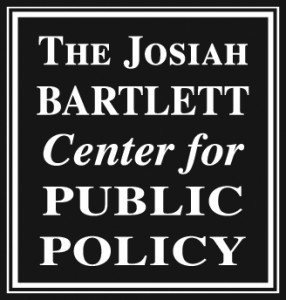On April 29, Gov. Chris Sununu announced that the state’s long list of mandated COVID-19 restrictions for various industries will expire on May 7, to be replaced by a Universal Best Practices Guidance.
We’d like to thank Drew Cline for this Op-Ed. If you have an Op-Ed or LTE
you would like us to consider please submit it to Skip@GraniteGrok or Steve@GraniteGrok.com.
This is a welcome and long-overdue change, which the Josiah Bartlett Center for Public Policy advocated in our reopening guidelines on April 30th — of 2020.
Almost exactly a year later, the state is finally switching from a set of strict mandates to a set of recommended best practices for all industries.
As we wrote last April;
To slow the spread of the virus and avoid overwhelmed hospitals, it isn’t necessary for the state to dictate which industries get to stay open. It’s necessary only for people to behave in ways that suppress the spread.
Dividing businesses by industry and ordering whole sectors closed forces many businesses to shut down even though they could operate with minimal risk by adopting and enforcing effective mitigation practices. A better framework would be “safe” vs. “unsafe” practices.
Under a safe practices model, a business would risk closure only if it couldn’t enforce strict mitigation protocols such as social distancing, surface disinfecting, and mask wearing. There is no justification for closing a business that can enforce such protocols, regardless of its industry.
Rather than the governor dictating which industries can and can’t open, a safe practices model would encourage and reward responsible behavior, including the widespread adoption of rigorous safety protocols throughout the economy.
One important reason for preferring guidance to mandates is that COVID-19 is a new virus that did not come with a long history of study by researchers. Epidemiologists and other experts weren’t quite sure how best to slow the spread, as became obvious when numerous health organizations, government agencies and medical professionals offered different prescriptions for handling the virus.
Organizations needed the flexibility to adapt to rapidly changing information and guidance.
Mandated behaviors restrict that flexibility. And they can be extremely harmful when wrong. Just ask the families of the thousands of New York nursing home residents who died as a result of Gov. Andrew Cuomo’s order to move infected COVID-19 patients from hospitals to nursing homes. Or the millions of students (and their families) who suffered academic and financial losses because of schools that stayed closed long after it was clear they could reopen safely.
Instead of ordering organizations to adopt rigid practices that might or might not work as intended, the state’s new guidance educates managers about basic best practices that can be adopted in multiple environments and situations.
Even so, it fails to incorporate some of the latest research. For instance, the guidance states that organizations should:
- “Work to maintain a distance of at least 6 feet or more of physical separation between people or related groups when possible.”
Not only has the six-foot rule never been supported by a strong body of research proving its effectiveness (the World Health Organization has always recommended three feet, not six), a new MIT study concludes that it is largely useless and gives a false sense of security. The study concludes that occupancy and time in a room are what matter, not distance, because the virus is carried on tiny air particles that circulate throughout an entire indoor space under normal ventilation scenarios.
Using a school classroom with 19 students as a case study, the authors wrote:
- “For normal occupancy and without masks, the safe time after an infected individual enters the classroom is 1.2 h for natural ventilation and 7.2 h with mechanical ventilation.”
By failing to incorporate the latest research, the state’s guidance could recommend practices that are not effective, while not informing managers of practices that are more effective. Because these are recommendations and not mandates, however, managers are free to adopt on their own initiative practices that are guided by newer research. The state’s switch from mandates to guidance is a good development.
Had it come earlier, perhaps some of the economic damage from restrictions on businesses could have been avoided.
